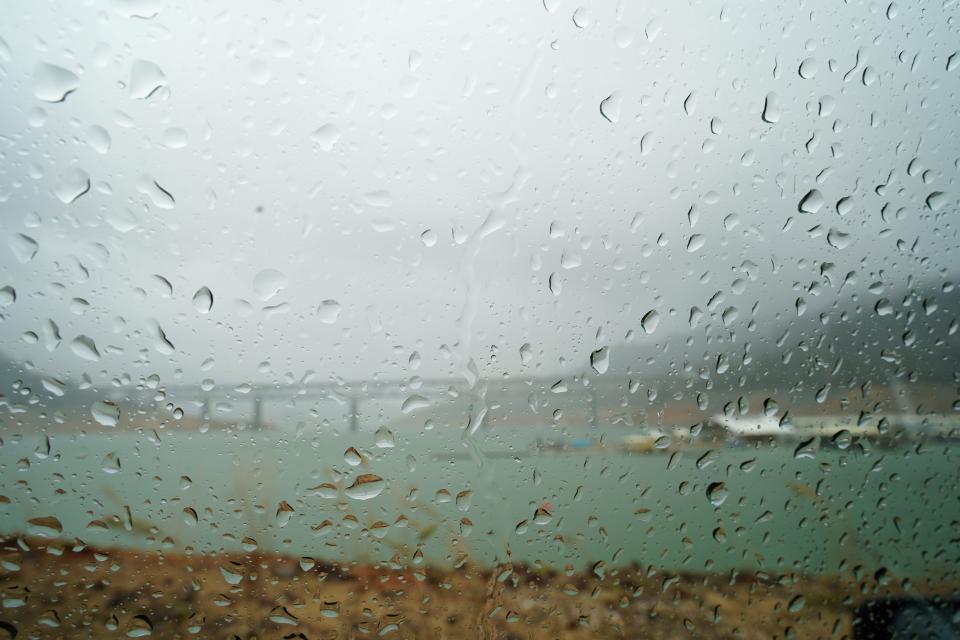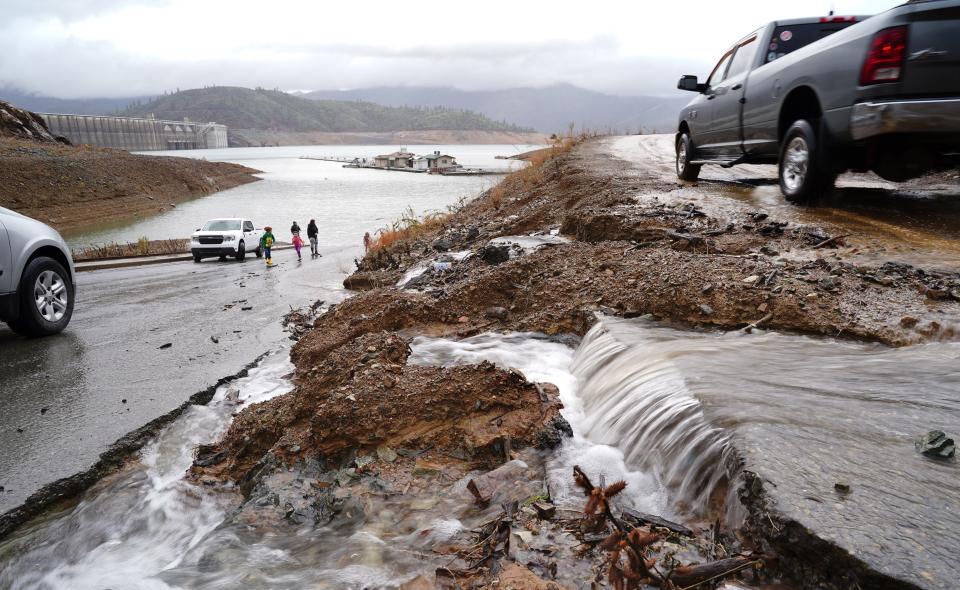Lake Shasta level rises; Redding rainfall total twice normal since Jan. 1
Something unusual happened in Shasta County over the past nine days.
North State residents have slogged through three years of a drought that has killed crops, emptied lakes and forced severe water cutbacks on residents who just wanted to water their lawns or grow a few tomatoes.
The drought is not over, but the amount of rain that has fallen over the region since Jan. 1 has brought at least one small measurement of good news.
As of Monday morning, 3.72 inches of rain had fallen from Jan. 1 to Jan. 9 at the Redding Regional Airport, more than double the the 1.53 inches that normally falls this time of year, according to the National Weather Service.
The rainfall total from Oct. 1 to Jan. 9 was also above normal, according to the weather service. As of Sunday, Redding was sitting at 14.5 inches since Oct. 1; the normal for that period is 13.29 inches.
Despite all the recent rain, the U.S. Drought Monitor isn't giving the Northern California any good news. Like a big blob of spilled ink, the drought monitor map of California showed a lake of red covering most of the Sacramento and San Joaquin valleys, the color indicating the area is not in a moderate or severe drought, but an even worse "extreme" drought.

Eric Kurth, a weather service meteorologist in Sacramento, said his agency doesn't make make the call on droughts.
"But I can tell you that we have gotten quite a bit of beneficial rainfall in recent weeks, and the snowpack has gone up. Those are ingredients in looking at drought, but that's not something we declare," Kurth said. "So I can just say that we've certainly got some beneficial improvements in terms of how much rainfall, how much snow we've got, and soil moisture has improved."
The amount of rainfall in Redding this year is still below the 14.77 inches Redding received from Oct. 1 to Jan. 9 last year, Kurth said. The weather service considers Oct. 1 to be the start of the water year and also measures rainfall totals from that date.
Most of the rain Redding received in fall and winter 2021-22 happened in October, Kurth said. Very little rain fell in January, February and March of 2022, deepening the drought.
"At this point last year, we were dry and setting record high temperatures. It was warm and dry for several months for our wettest time of the year," he said.
Unlike last year, though, periods of rain are expected to continue through the rest of January 2023, Kurth said.

"I could say with good assurance that we're not going to end up with a dry January this year. That is very clear," Kurth said.
In the coming week, the Redding area could see as much as 2 inches of rain through Tuesday and up to 5 inches by Sunday, he said.
The recent rains have also helped to slowly fill Lake Shasta, an important reservoir not only for the Redding area, but the entire state. Since Jan. 1 the water level in the lake rose about 11 feet due to the rain.
The lake level rose about 2 feet from Sunday to Monday. Some of that could be due to 2.64 inches of rain falling at Shasta Dam during the same time period.
As of Sunday, Lake Shasta was 37% full and 62% of average for the date, according to the California Department of Water Resources.
Many local water agencies, including the city of Redding, Bella Vista Water District and other smaller water districts receive water that is held behind Shasta Dam. When the lake level gets too low due to a dearth of rainfall, the U.S. Bureau of Reclamation has to reduce water deliveries to local agencies.
Water deliveries from the lake were reduced to historically low levels in 2022 due to the drought. The Bella Vista Water District, which serves residents from east Redding to Palo Cedro and Bella Vista, had its bureau water cut to zero, with the district receiving only enough from the agency to meet health and safety standards.
The Anderson-Cottonwood Irrigation District, which provides water to farms in southern Shasta and northern Tehama counties, also did not receive water last year and consequently did not deliver any water to its customers for the first time in 106 years.
This article originally appeared on Redding Record Searchlight: Lake Shasta level rises; Redding rain total twice normal since Jan. 1

